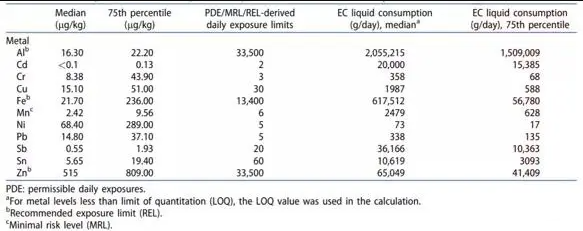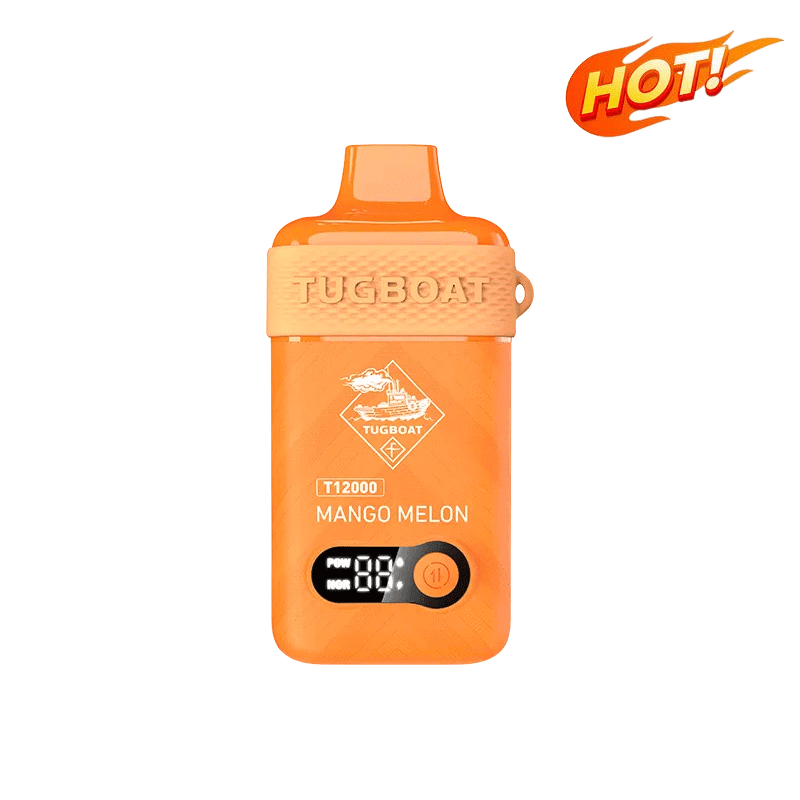Q1:Will e-cigarettes lure non-smokers into smoking cigarettes?
This statement takes advantage of many people’s assumption that e-cigarettes are also a form of puffing, and that people who are tired of smoking will naturally seek out more exciting cigarettes, so what’s the truth?
Jacques Le Houezec, a neuroscientist at the French National Institute of Medical Research, analyzed EU polling data in detail, which showed that only 0.09% of non-smokers who tried e-cigarettes would use them every day, so the idea that e-cigarettes induce people to smoke is completely untenable.
In terms of attitudes towards e-cigarettes, governments have emphasized their impact on young people, for example, the FDA’s recent news about banning certain tobacco oil flavors to prevent teenagers from becoming addicted to e-cigarettes is a hot topic in major media in the U.S. In reality, however, it is still controversial as to whether or not e-cigarettes can lead to teenage addiction.
Four representative surveys of British teenagers in 2014 showed that 8% of young people had tried e-cigarettes at least once, but only 2% of them used them regularly, and most of those had a history of smoking. In a survey of about nine thousand 11- to 16-year-olds in Wales, only 54 non-smokers used e-cigarettes regularly.
It’s not just the UK, the Journal of the American Medical Association followed up with 3,300 participants at ten Los Angeles high schools, and 7% used e-cigarettes at least once in the last 30 days. But when the researchers looked at 2,530 subjects who had never used tobacco at the start of the study, only 222 of them (8.7%) said they had tried e-cigarettes.
This tells us that while young people are experimenting with e-cigarettes and the percentage who say they have is on the rise, only a very small number of young non-smokers are regularly attracted to these products.

Q2:I’ve heard that smoking e-cigarettes can cause me to inhale heavy metals, what’s wrong with that?
The claim that e-cigarettes are overloaded with heavy metals comes mainly from a paper from Johns Hopkins University, as shown below.
But a recent study published in the SCI journal Inhalation Toxicology has strongly refuted this assertion.
Prof. Konstantinos Farsalinos from the University of Patras, Greece, and Prof. Brad Rodu from the University of Louisville, USA, carefully read the paper and found that the Johns Hopkins researchers had miscalculated the amount of inhalation that vapers were taking in each day, and that they had arrived at the heavy metal limit based on the premise that vapers were inhaling e-smoke 24 hours a day, at least. Inhalation of e-smoke – people take about 17,000 breaths a day, and according to a large number of surveys done by relevant organizations, the average Vaper takes about 600 puffs a day from an e-cigarette.
So these 600 puffs of inhalation will not ingest excessive heavy metals? The two professors used three internationally recognized heavy metal safety standards (PDE, MRL and REL) to calculate the heavy metal content in e-smoke, and came up with a table like this. The table shows the levels of heavy metals in e-smoke

This table lists all the heavy metal elements contained in e-smoke: aluminum, chromium, cadmium, copper, lead, iron, nickel, and so on, and concludes that it is virtually impossible to inhale excessive amounts of heavy metals through e-cigarettes, even when using the highest standards for heavy metal content in the Johns Hopkins paper (far right of the table).
Notice on the far right of the table that it would take a Vaper smoking 1.5 million grams of vape oil per day to inhale more than the safe standard for aluminum. Cadmium is 15,000 grams, copper is 588 grams, lead is 135 grams, and the lowest is nickel, which is also smoked at 17 grams.
What is the concept of smoking 17 grams of tobacco oil a day? Let’s take MOTI as an example, the amount of tobacco oil in one cartridge is 1.8 ml, and we calculate according to the propanetriol, which has the largest specific gravity, the weight of the tobacco oil will not be more than 2.5 grams, which is equivalent to letting a Vaper smoke 7 cartridges a day.
I have been in contact with many Vapers, it is rare to smoke 2-3 cartridges a day, and 7 cartridges should be able to apply for the Guinness World Record.
So far, we can conclude that through electronic cigarettes, especially small cigarettes intake of excessive heavy metals is impossible, unless you have the intention to do toxicology experiments on their own, that can only be inhaled in excess of the nickel.
Q3:E-cigarettes also have nicotine, why is it less harmful than cigarettes?
Many people’s fear of nicotine probably comes from the same statement: a drop of nicotine can kill a horse. This claim is often found in various public service announcements for smoking cessation, but in reality, it has little to do with the actual harm that nicotine causes to the human body.
As an addictive substance prevalent in nature, we are familiar with many vegetables, such as tomatoes, eggplants, potatoes contain traces of nicotine, especially noteworthy, many people’s eyes of health treasures goji berries, also contains nicotine, only the content is very small.
Injecting nicotine is indeed very toxic. Extracting nicotine from 15-20 cigarettes and injecting it into a vein can be fatal. But please note that inhaling nicotine-containing smoke is not at all the same thing as injecting it intravenously.
Studies have shown that only 3% of the total amount of nicotine is absorbed by the lungs when smoking, and that this nicotine is rapidly degraded when it enters the body and is excreted through sweat and urine, which is why it is very difficult for us to get nicotine poisoning from smoking.
Modern medical evidence shows that the serious consequences of cigarettes, such as lung cancer, emphysema and cardiovascular disease, basically all come from cigarette tar, and the harm of nicotine on the human body can not be compared to the report released by the Department of Public Health (PHE) of the United Kingdom, the harm of e-cigarettes that do not contain tar is at least 95% less than that of cigarettes, and there is no difference in the content of nicotine between the two actually.
Q4:But I’ve heard that nicotine has adverse cardiovascular effects and also affects brain development, right?
This is true, but you may be overestimating the actual harm. As a stimulant, nicotine enters the body and stimulates peripheral vasoconstriction, leading to increased heart rate, higher blood pressure and faster breathing, which increases the risk of cardiovascular diseases such as high blood pressure and stroke.
It is by no means harmless, but virtually any stimulant poses the same health risks, including another common stimulant in life: caffeine.
Caffeine, like nicotine, is a stimulant that acts on the central nervous system. Nicotine causes almost the same cardiovascular effects that caffeine does, but we won’t see signs on the packaging of any kind of coffee suggesting health risks, and it’s hardly a case of merchants intentionally concealing them, but rather the public’s tacit understanding that it’s difficult for low doses of caffeine to actually cause health problems.
Some of you may say that you are not a coffee drinker, but in fact many Chinese who are used to drinking tea are exposed to caffeine on a daily basis, as green tea contains even more caffeine than coffee. So if you drink tea regularly, it’s hard to argue that the trace amounts of nicotine in e-cigarettes will significantly affect your cardiovascular health.
The effects of nicotine on adolescent brain development, especially on the brain’s ability to process language, memory, and other functions, are indeed supported by some medical evidence. However, caffeine can similarly affect brain development. Therefore, while banning e-cigarettes for teenagers, they should also be urged to drink less or no coffee.
The current exaggerated and inaccurate claims about the health hazards of nicotine originated in the public health campaigns in Europe and the United States that began in the 1960s, when governments intentionally exaggerated the toxicity of nicotine in order to publicize smoking cessation. In fact, whether trace amounts of nicotine are good or bad for the human body is still a matter of debate in the medical community: for example, the Royal Society for Public Health (RSPH) in the United Kingdom has emphasized some of the medical benefits of nicotine, such as the treatment of Parkinson’s, Alzheimer’s disease, and Attention Deficit Disorder, to name just a few.
Although the old saying goes that “dose aside, toxicity is a joke”, we should be careful about the possible health risks of nicotine, and if you are not addicted to cigarettes, do not try any nicotine inhalation devices, including e-cigarettes.
Q5:Although the nicotine in e-cigarettes is not harmful, are the flavors in the oils toxic?
“Fragrances are toxic” is also an old rumor about e-cigarettes, which is more confusing than nicotine and heavy metals. This is because, although it is known that more than 8,000 kinds of cigarette oil in the artificial flavors have reached the food-grade standards, but refers to the non-toxicity of the food in the food, the toxicity of the inhalation of the atomized is not certified, so about the flavors of the atomization of the toxicity of the exaggerated claims have been on the rise in the past few years, the most typical statement is that the e-cigarette flavoring of the butanedione will lead to the lungs of the popcorn.
What’s the truth?
In 2015, a study from Harvard University analyzed and studied e-cigarette oils. The results showed that 75% of the flavored liquids they tested contained a chemical called diacetyl, an artificial flavor with a buttery taste, which is thought to have been responsible for causing a rare lung disease called “occlusive bronchiolitis”, or “popcorn lung”, in eight popcorn factory workers back in 2000. “Popcorn Lung”.
“Popcorn lung” is an irreversible obstructive lung disease in which the fine bronchial tubes are narrowed and blocked due to inflammation or fibrosis. There are many causes of this disease, such as viral infections, transplant rejection, and exposure to toxic chemicals including chlorine, ammonia, and ozone. The eight workers mentioned above are typical cases of those affected by toxic environments, and it was due to their prolonged exposure to high concentrations of butanedione gas that they developed the disease.
In this regard, Prof. Konstantinos Farsalinos of the University of Patras, Greece, found 159 samples of cigarette oil, 74.2% of which contained butanedione, and under laboratory conditions he measured in detail the amount of butanedione vapor inhaled in a day, and found that the average was only 56 micrograms per day, far below the safety standards of the U.S. National Institute for Occupational Safety and Health (NIOSH) and 100 times lower than the exposure from cigarettes.
Interestingly, although cigarettes contain much higher levels of butanedione than e-cigarettes, there have been no cases of smokers developing popcorn lung.
In addition to the famous “popcorn lung theory”, due to the complexity of the composition of flavors, many media have made other claims, such as the cytotoxicity of flavors exceeds that of cigarettes, and the substances in flavors can greatly damage the lungs and heart function. And a 2018 report on e-cigarettes published by the UK’s Department of Public Health has decoded each of these claims.
According to the report, many media outlets claimed that cinnamon-flavored vape oils are strongly cytotoxic and tobacco-flavored vape oils have high levels of nitrosamines, but the levels of toxic substances in all of these vape oils are orders of magnitude (orders of magnitude) lower than in cigarettes.
The report points out that many experiments to prove the cytotoxicity of flavors use not atomized tobacco oils, but directly expose cells to the toxic molecules in flavors, and that such experiments do not have practical significance because the proportion of flavors in tobacco oils is only 10-15 percent, and the cytotoxicity of toxic substances can be vastly different at different concentrations. Yet the report found that even this is far less toxic than cigarettes. As the old adage goes, it’s all hooliganism to talk about toxicity in terms of dosage.
Although the medical profession has not provided definitive evidence of the toxicity of flavors, out of scientific research caution, the report still points out that due to the complexity of flavors, there are still some preventable risks after inhalation, and more experiments are needed to explore the effects of inhalation on the human body.
Q6:In addition to nicotine, I have heard that e-cigarettes also cause people to inhale formaldehyde, so their carcinogenicity exceeds that of ordinary cigarettes, what’s wrong with that?
This claim was first seen in a paper in the New England Journal of Medicine, and its experimental data is not completely unreliable, but there is a prerequisite, dry burning.
The so-called dry burning is the phenomenon that when using a high-power VAPE, the heating wire continues to heat the oil-conducting cotton after the cigarette oil is exhausted. Experiments by Greek scientist Konstantinos Farsalinos in 2016 showed that the conclusion on the carcinogenicity of e-cigarettes was reached after frequent dry burning of e-cigarettes in the laboratory. However, in real life, dry burns are easily recognized by users, so the inhalation of aldehydes is much less than the laboratory data.
In addition, Dr. Farsalinos’ team tested that the concentration of aldehydes released from e-cigarettes is related to the amount of voltage, with aldehydes releasing seven to eight times more equivalent at 5.0V than at 4.2V.

Formaldehyde, acetaldehyde, acrolein, acetone release versus e-cigarette voltage.
As can be seen from the above chart, when the voltage is below 4.0V, the release of aldehydes is extremely small, for example, the formaldehyde inhaled by smoking 50 puffs of e-cigarettes is less than 10 micrograms, and the harm is almost negligible.
In this way, it is true that the use of high-power VAPE may lead to excessive inhalation of formaldehyde due to dry burning, but the voltage of small cigarettes is generally lower than 4.0V, so it is difficult to say how much health risk is associated with the trace amount of formaldehyde inhaled.
Q7:Since e-cigarettes are so much less harmful than cigarettes, why does Hong Kong still want to ban e-cigarettes completely?
In October last year, Hong Kong Chief Executive Carrie Lam Cheng Yuet-ngor said in the 2018 Policy Address that e-cigarettes would be banned in Hong Kong. And there are reports that the medical profession in Hong Kong has long called for a ban on e-cigarettes before, and also set up a big coalition to ban e-cigarettes, urging the SAR government to ban emerging tobacco products such as e-cigarettes and heated cigarettes as soon as possible.
This news may be the direct reason why many friends have been talking about e-cigarettes in recent days. It is not true that e-cigarettes are hazardous to health, and it is also true that Hong Kong has banned e-cigarettes. In addition to Hong Kong, 16 countries, such as Singapore, Brazil and the Philippines, have also banned the sale of e-cigarettes. However, it is strange that the United States, the United Kingdom and France, where the medical standard exceeds that of Hong Kong, have not banned e-cigarettes.
This is not because these countries are unaware of the risks of e-cigarettes, but the formulation of public health policies must weigh the pros and cons.
The premise of Hong Kong’s total ban on e-cigarettes is its tobacco control policy that leads the world. Data show that from the birth of the first anti-smoking legislation in Hong Kong in 1982 to the amendment of the Smoking (Public Health) Ordinance in 2012, wherever there is a ceiling, smoking is not allowed, the proportion of smokers in Hong Kong who are over 15 years of age is now controlled below 10%, and the proportion of young people between the ages of 15 and 19 years of age who smoke is down to 1%, which is far more than the level of tobacco control in Europe and the United States, and cigarettes are a public health hazard in Hong Kong. The hazards of cigarettes to public health in Hong Kong have been brought under very effective control.
On this premise, although the harm of e-cigarettes is far less than that of cigarettes, due to the fact that the base of smokers is already very small, they cannot play a significant role in lowering the proportion of smokers in the population, and on the contrary, they may result in young people being induced to smoke, so a total ban is the option that is in the best interest of the majority of the people.
In the United Kingdom and the United States and other countries, the proportion of smokers is much higher, e-cigarettes as a far less harmful than cigarettes harm reduction products, to reduce the number of smokers, especially to reduce the harm of secondhand smoke has a significant role. Therefore, although the FDA has introduced control measures for e-cigarettes, it has never mentioned a total ban.
It is worth mentioning that although the harm of e-cigarettes has been emphasized in the initiative of the medical profession in Hong Kong, no one has ever said that e-cigarettes are more harmful than cigarettes.



